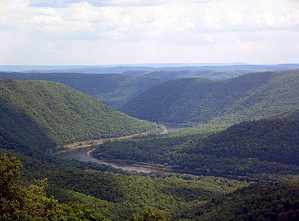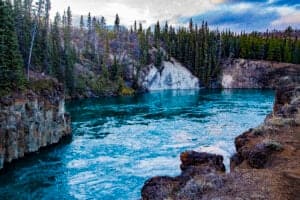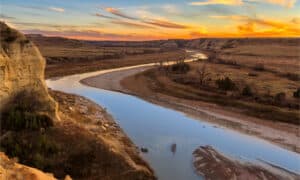Germany is a country in north-central Europe located between the Baltic and North Seas and the Alps. It is the second-most populous country in Europe (following Russia). Many visitors flock to Germany to experience its natural beauty, history, culture, and cuisine. Germany has a wide variety of landscapes and natural sites: tall mountains in the south, sandy rolling hills in the north, forested hills in the urbanized west, and plains in the agricultural east. It also has one of the most developed river networks in the world. Let’s take a look at some of these remarkable rivers in Germany.
Rivers in Germany
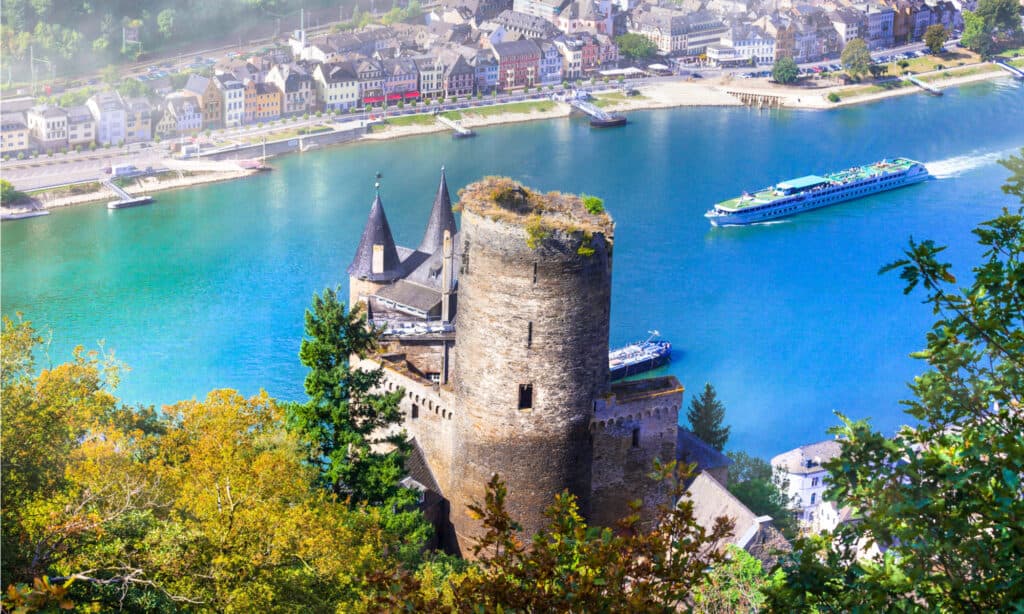
Germany is home to 15 rivers that are at least 300 kilometers.
©leoks/Shutterstock.com
Germany is home to 15 rivers of at least 300 km (186 miles) in length. The rivers shape the geography of the country and most major towns sit on or near one.
Rivers are moving bodies of water framed by defined banks that flow into a larger body of water (usually an ocean or sea). You could think of rivers as the “veins” of our planet, pumping water and nutrients through ecosystems. Rivers also supply fresh water to human civilizations and provide important shipping and transportation routes. As rivers flow across the landscape, they carve, create, and nourish valleys, producing lush vegetation and beautiful vistas.
As we look at the largest rivers in Germany, we are measuring their size based on length, rather than depth or discharge amounts. So, what are the 12 largest and longest rivers in Germany?
12. Neckar River – 228 miles (367 km)
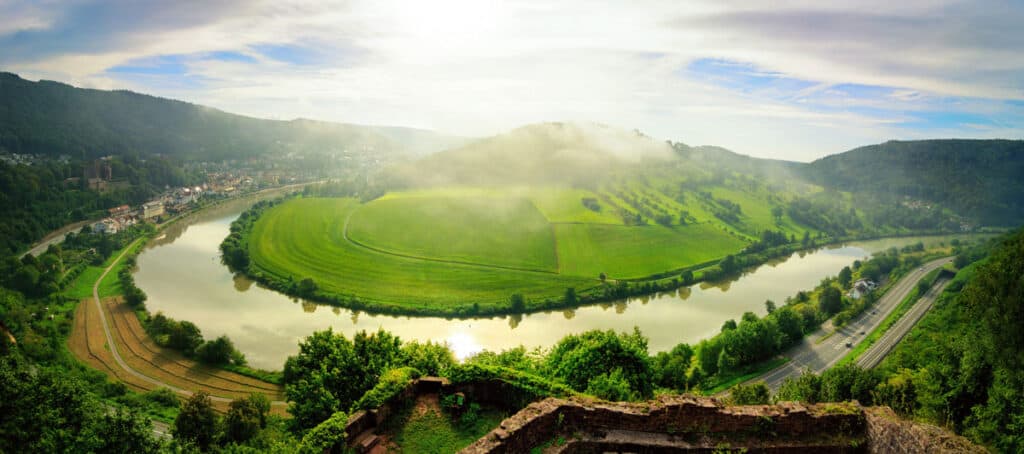
Known for its “wild” meandering, the Neckar River is full of scenic charms.
©iStock.com/Smileus
The Neckar River is 228 miles long and flows primarily through the state of Baden-Württemberg in southwest Germany. “Neckar” may come from the Celtic word Nikros, meaning “wild water” or “wild fellow.” The natural landscape of the Neckar River varies, with narrow valleys alternating with widening valleys, large valley meadows, and a great deal of “wild” meandering as it flows along.
Like many rivers in Germany, the Neckar is known for its simple, scenic charm. The river flows past hilly banks, vineyards, orchards, and woods. Many sections of the river were industrialized and redeveloped for hydropower during the 19th and 20th centuries. Because of this, the Neckar is often seen as a symbol of endangered nature.
11. Ems River – 230 miles (371 km)
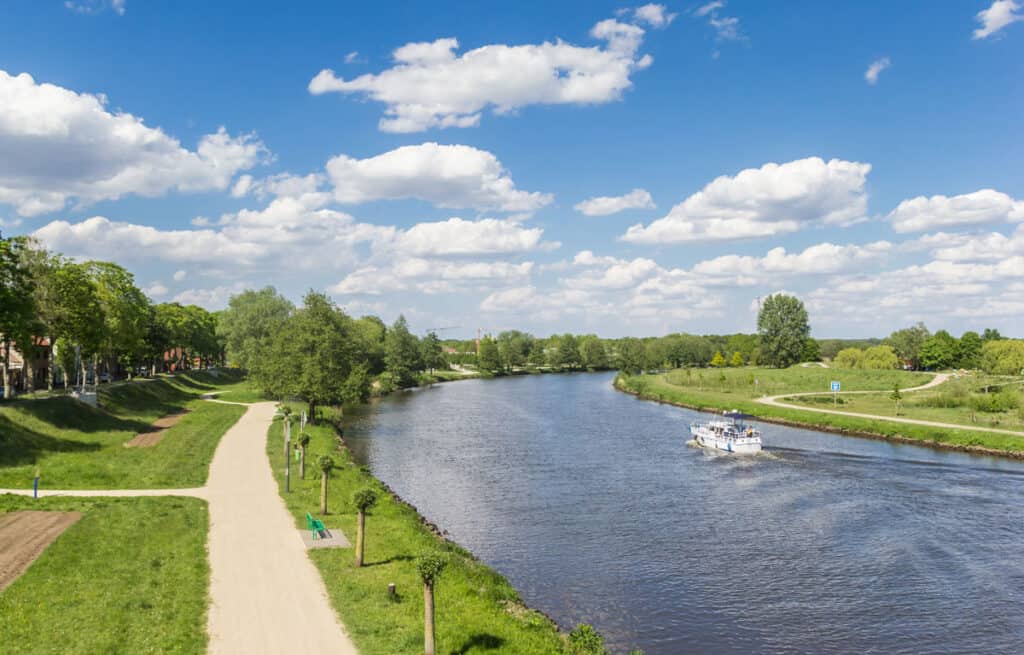
The Ems River measures 230 miles in length.
©Marc Venema/Shutterstock.com
The Ems River is a 230-mile-long river in northwestern Germany. It begins in the Teutoburger Forest and ends in the North Sea. The Ems River forms the border between Germany and the Netherlands. Biking is very popular along the Ems River, with three different long-distanced bicycle routes that run alongside and cross the river: The EmsAuenWeg, the Emsland Route, and the Hase Ems Weg.
10. Spree River – 250 miles (403 km)
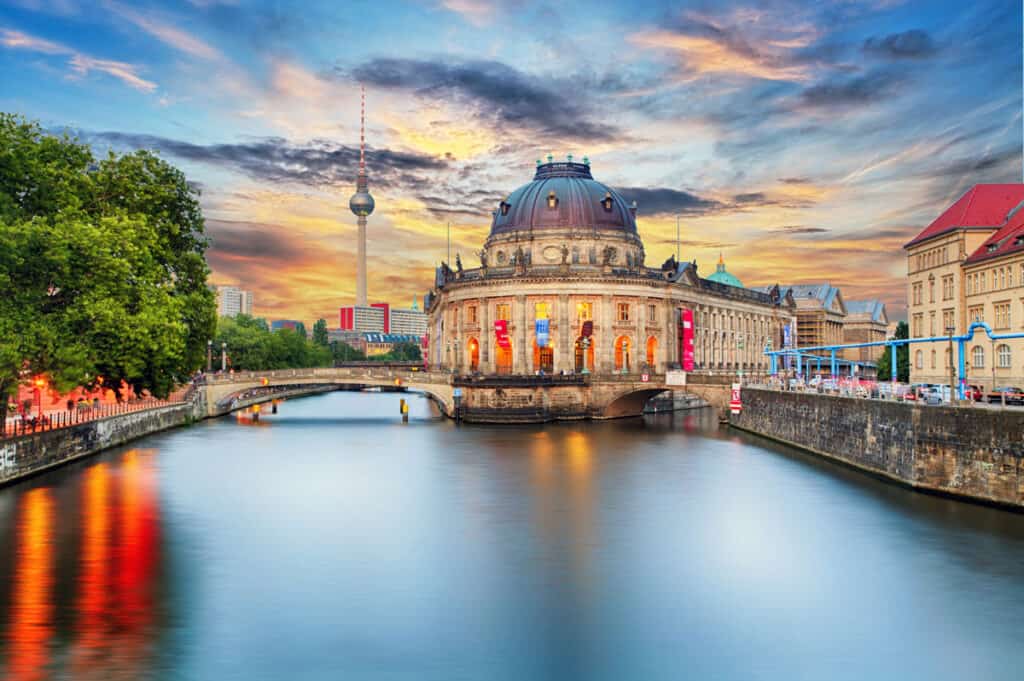
The Spree River is home to 18,000 species of flora and fauna.
©iStock.com/TomasSereda
The Spree River is 250 miles long, beginning its journey in the Lusatian Mountains in northern Bohemia, Czech Republic, just above the German town of Neugersdorf. It connects into the Elbe River in Germany and empties into the North Sea.
As The Spree River flows through Germany, a portion of it forms a marshy wooded biosphere reserve known as the Spree Forest, or Spreewald. Spreewald contains wetlands with alder forests, sandy dry areas with pine forests, grasslands, and fields. Approximately 18,000 species of flora and fauna have been identified here.
In the city of Berlin, the Spree River is also the location of the Badeschiff (“bathing ship”), a floating public swimming pool. The Badeschiff opened in 2004, providing a sanitary environment near the river where people could swim. The River Spree also runs along Spreeinsel, or Spree Island. There are five large Berlin museums and an exhibition building on the island. This section is often called “Museum Island.” Museum Island is one of Berlin’s most visited sites.
9. Saale River – 265 miles (426 km)
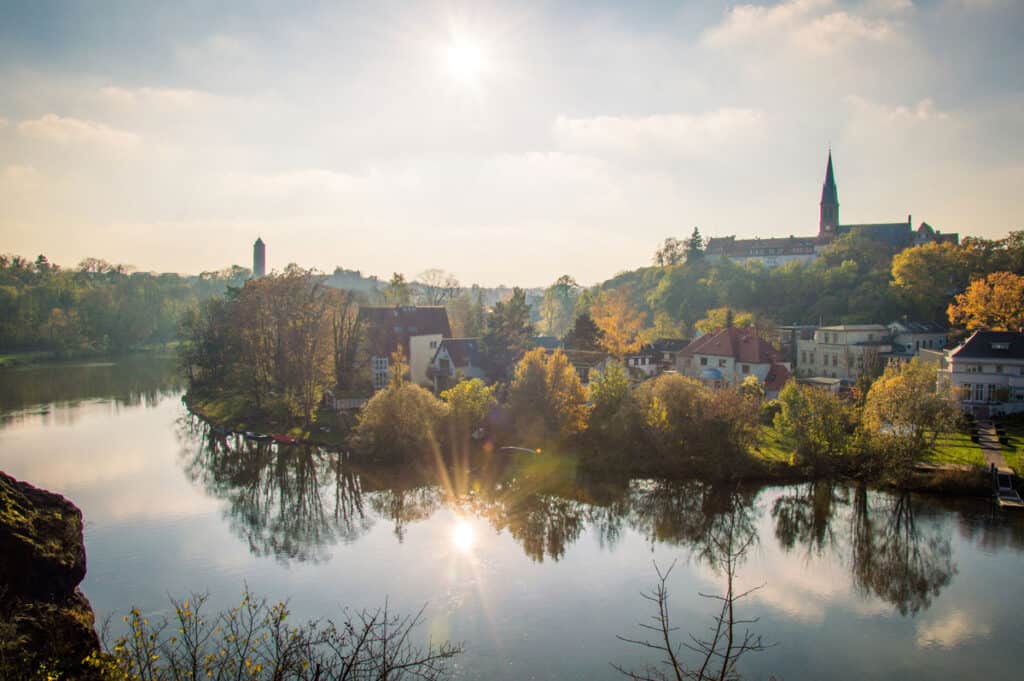
Eventually, the Saale River connects to the Elbe River.
©iStock.com/unikatdesign
The name of the Saale River likely came from the Proto-Indo-European root séles, which means “marsh.” It also may be related to the Indo-European root sal, which means “salt.” The Saale River is 265 miles long, starting in the state of Bavaria on the slope of the Großer Waldstein Mountain in the Fichtelgebirge Mountain Range. The river’s course is winding as it flows north through the mountains of the Thuringian Forest. The Saale joins the Elbe River just above the town of Barby.
8. Weser River – 273 miles (440 km)
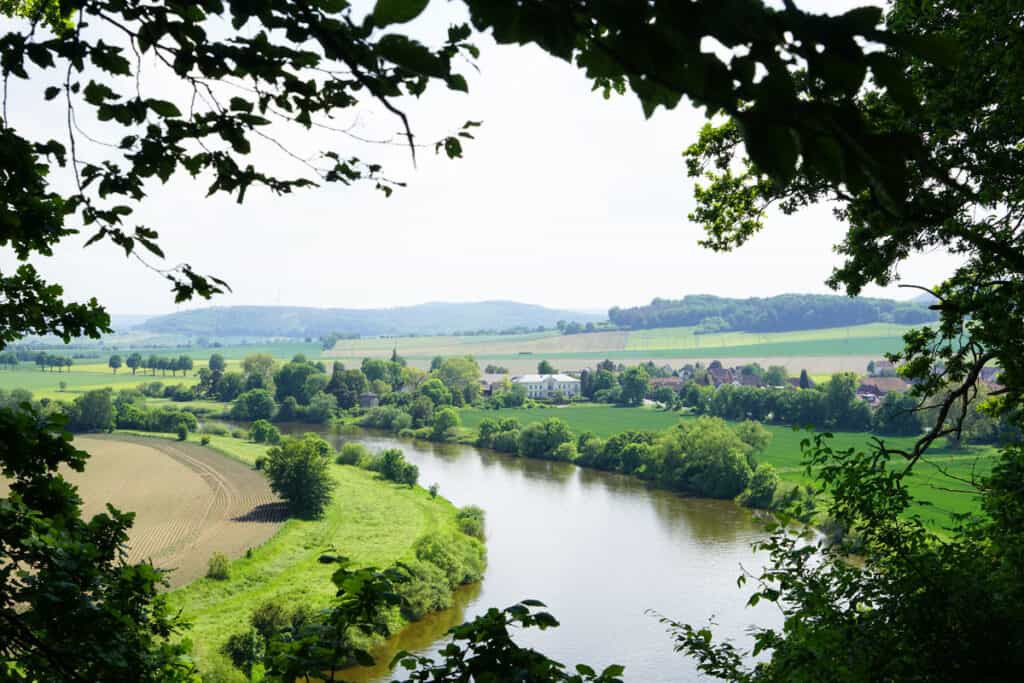
The Wester River is located entirely in Germany
©iStock.com/EllyMiller
The Weser River is 273 miles long and is located entirely in Germany. It begins in Lower Saxony in north-west Germany and flows through Saxony countryside. The landscape along the river here almost appears to have been forgotten by time. It features riverside meadows, Renaissance palaces, unspoiled country towns, medieval castle ruins, and wealthy merchants’ homes from the 16th century. In the tale The Pied Piper of Hamelin, the piper played his pipe to lure the rats into the Weser River where they all drowned.
7. Inn River – 317 miles (510 km)
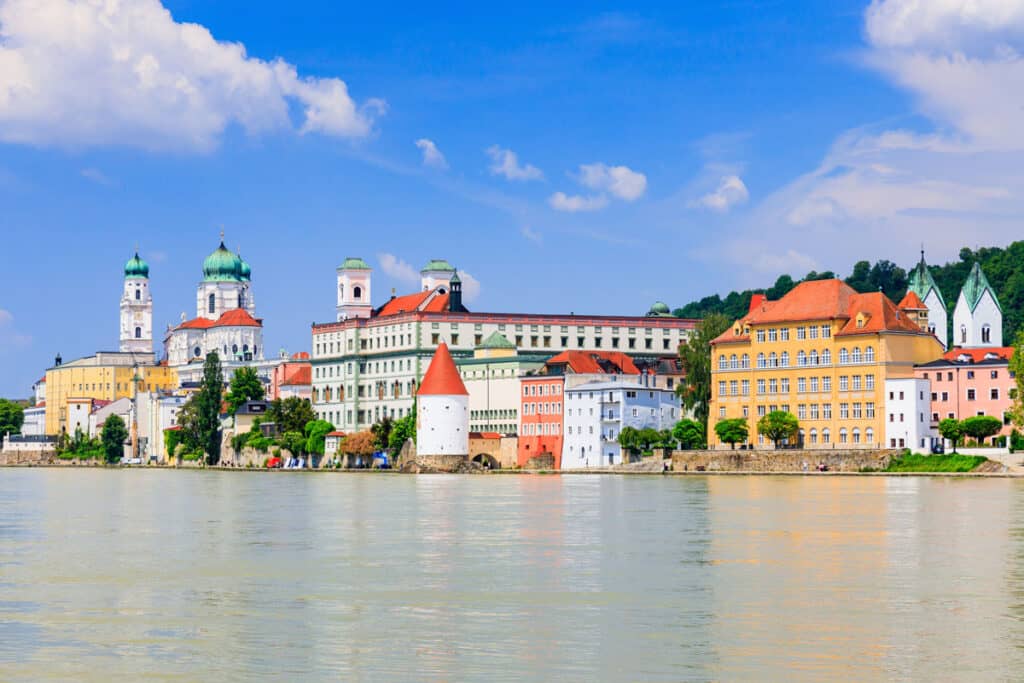
Beginning in the Swiss Alps, the Inn River flows into the Danube
©iStock.com/sorincolac
The Inn River is a 317-mile-long river that begins in the Swiss Alps. It flows northeast across western Austria and southern Germany. The Inn enters Germany through the state of Bavaria. The Inn River runs along the border of Bavaria, and eventually flows into the Danube, forming the border between Germany and Austria.
6. Main River – 326 miles (524 km)
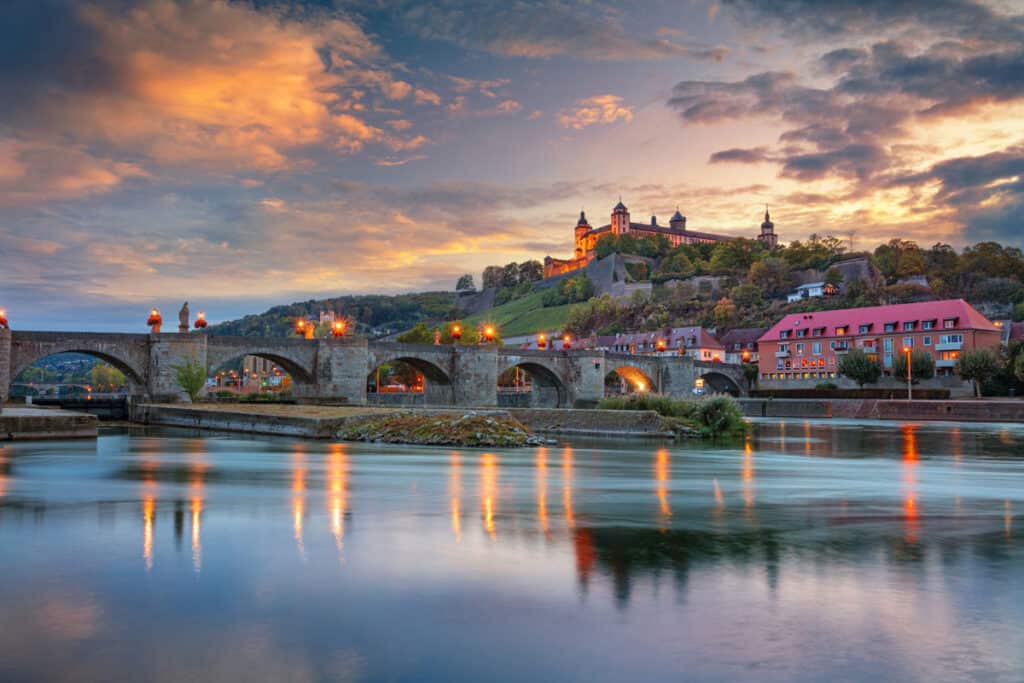
The Main River is the longest river based entirely in Germany
©iStock.com/RudyBalasko
The Main River is the longest river in Germany that does not flow into any other country. The Main River is 326 miles long, beginning as the White Main River in the Fichtel Mountains of northeastern Bavaria. It flows west through central Germany until it meets the Rhine River below the city of Rüsselsheim am Main. The landscape found along the river represents much of Germany’s history and culture with medieval villages, ancient castles, and quaint cottages lining the riverbanks.
5. Moselle River – 339 miles (545 km)
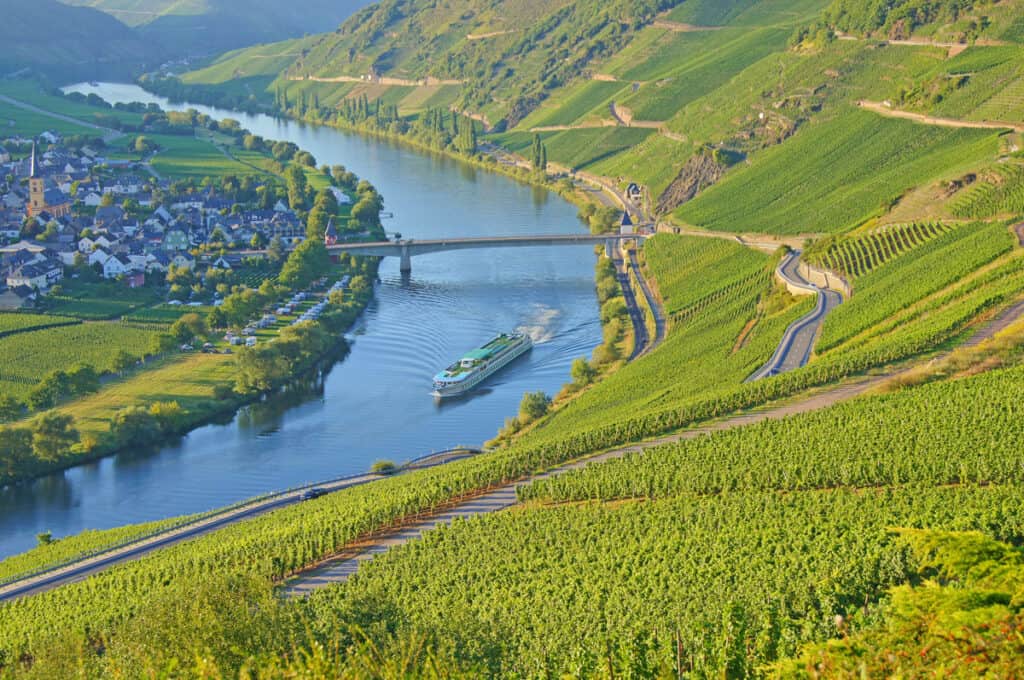
©iStock.com/Alfredpics
Known for its beautiful valley and striking scenery, the Moselle River is 339 miles long. It begins in the Vosges mountains in eastern France, then flows through northeastern France and Luxembourg to western Germany. The beauty of the Moselle River inspired the ancient Roman poet, Ausonius, to write a poem about it in 371.
Today, the Moselle River flows between stretches of castles, ruins, and vineyards. It provides a popular setting for visitors to cycle and run alongside the flowing water, as well as participate in water sports such as canoeing. The Moselle River valley is considered one of the most beautiful in all of Germany. Vineyards and Rieslings (a variety of white grape), picturesque villages, castles, and lush landscapes cover the Moselle River valley.
4. Oder River – 531 miles (854 km)
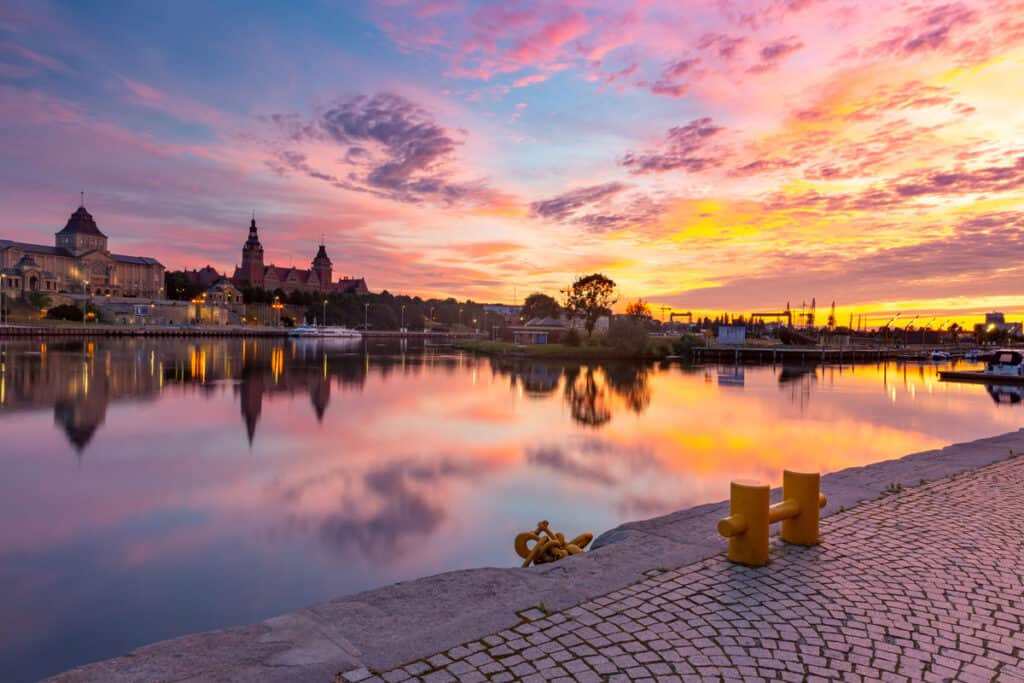
Flowing through the Czech Republic, Poland, and Germany – the Oder River is 531 miles long.
©iStock.com/KavalenkavaVolha
The Oder River is 531 miles long. It begins in the Czech Republic and flows through western Poland. As it moves through Poland, it becomes part of the Oder-Neisse line, forming the border between Poland and Germany. Eventually, it flows into the Szczecin Lagoon, which is shared by Poland and Germany. Here it splits into three branches that empty into the Bay of Pomerania of the Baltic Sea. After World War II, the Oder became the far eastern border of Germany.
3. Elbe River – 724 miles (1,165 km)
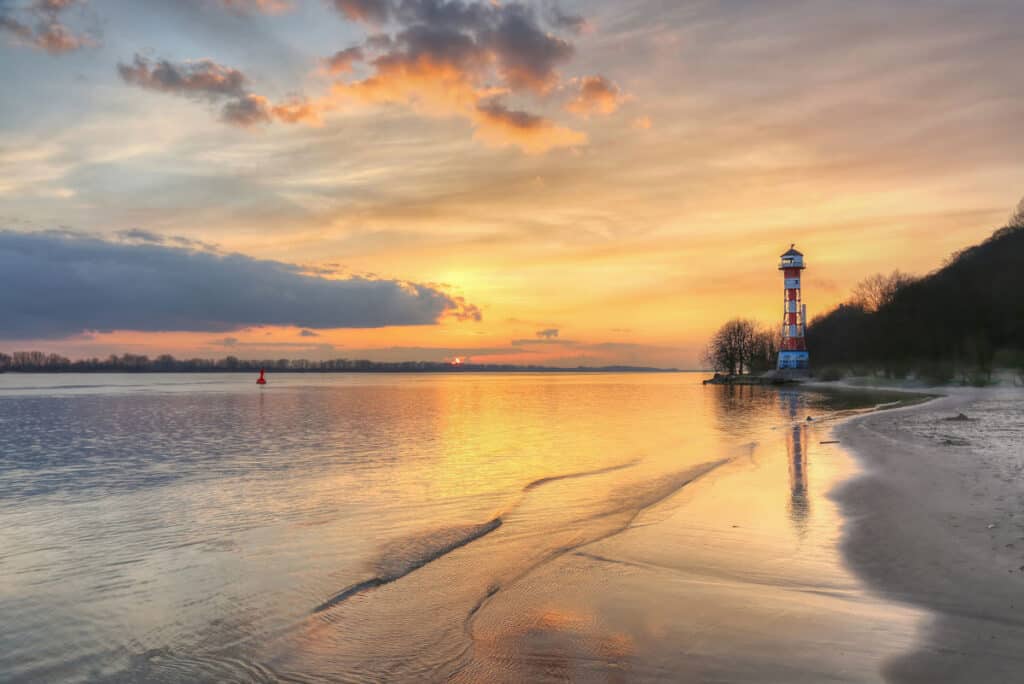
Measuring 724 miles, the Elbe is Germany’s third longest river.
©iStock.com/Sabine Wagner
The Elbe River is one of Central Europe’s most important waterways, measuring 724 miles long. It begins in the Krkonoše or Giant Mountains, a mountain range in the northern Czech Republic. After traveling through Germany, it empties into the North Sea. The Elbe has the 4th largest river basin in Europe and is has important trade links as far inland as Prague.
Most of the Elbe River remains largely unaltered by humans and full of lush landscapes, wetlands, and woodlands. The Middle Elbe Biosphere Reserve extends along the Elbe River. Here many wildlife species thrive, including red and black kites, cranes, and storks.
2. Rhine River – 765 miles (1,230 km)
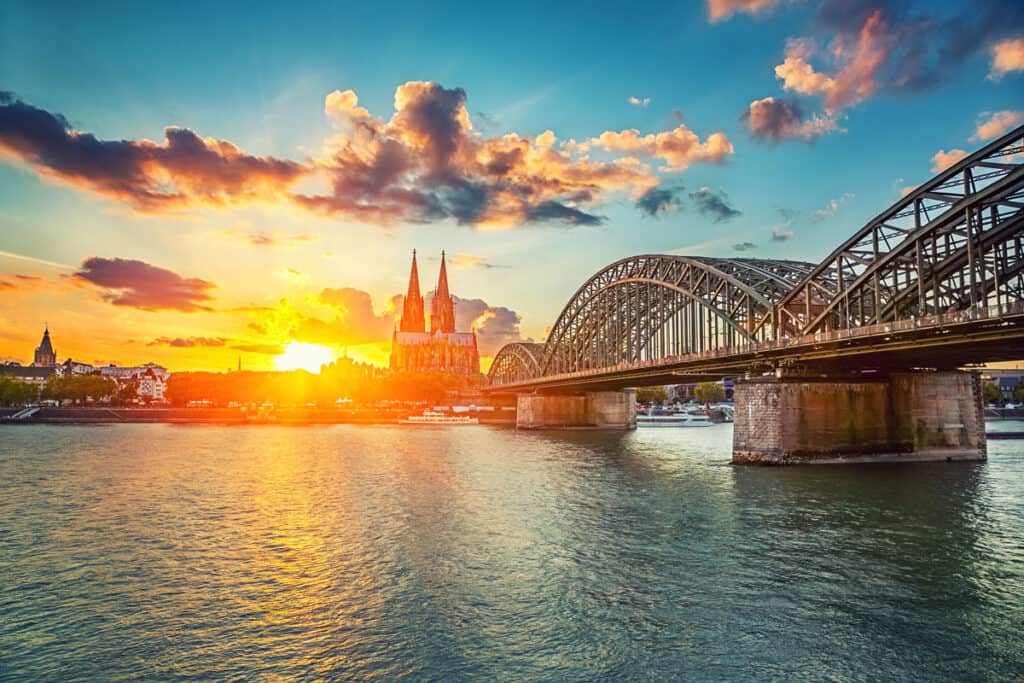
The Rhine River is near many of Germany’s most populous cities.
©iStock.com/sborisov
The Rhine River is 765 miles long, making it the second-longest river in Central and Western Europe (following the Danube River). The Rhine River flows through Switzerland, Liechtenstein, Austria, Germany, France, and the Netherlands. Since the time of the Roman Empire, the Rhine River has been used as an important transport route in Europe to bring trade and goods inland.
The Rhine River is also a cultural icon for Germany. It was an important symbol in German nationalism in the 19th century. The German composer, Richard Wagner, used the Rhine as the setting for Das Rheingold, the first opera of his infamous three-part epic, Der Ring des Nibelungen (you might be familiar with a song from this epic-opera, “Ride of the Valkyries”). In Wagner’s opera, the Rhine River is where the rheinmaidens protect their hoard of gold.
1. Danube River – 1,777 miles (2,850 km)
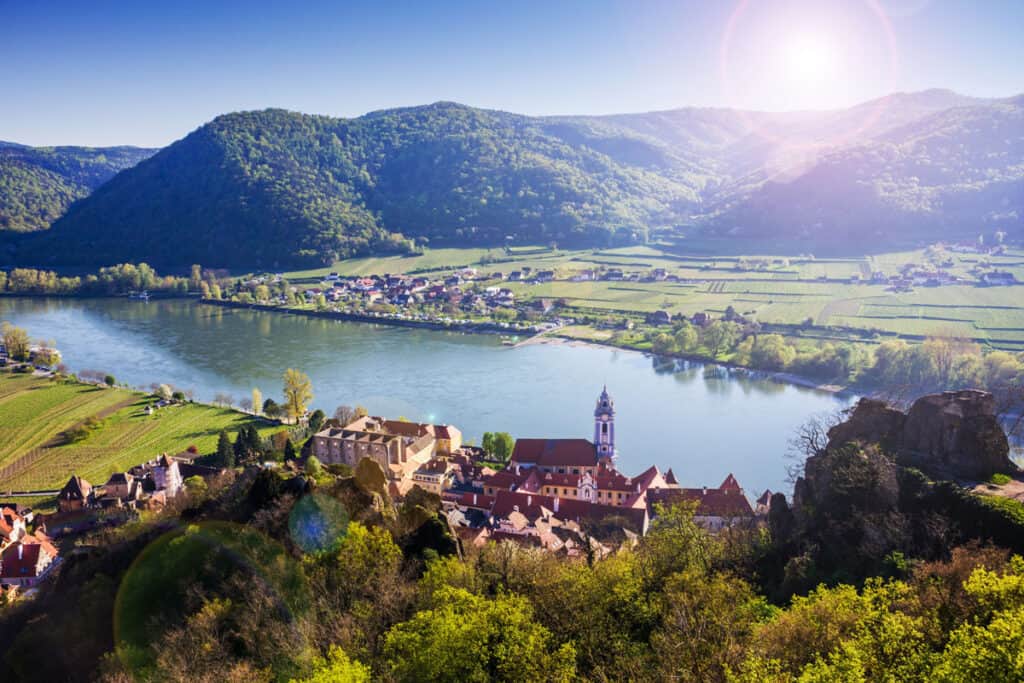
©iStock.com/Sergey_Fedoskin
The Danube River is 1,777 miles long, making it the longest river in Central and Western Europe. It is the longest river that flows through Germany, and the 2nd longest river in all of Europe (following the Volga in Russia). It begins in the Black Forest in the German town of Donaueschingen and flows into the Black Sea through the Danube Delta in Ukraine and Romania.
The Danube flows through or along the borders of 10 countries—more than any other river in the world: Germany, Austria, Slovakia, Hungary, Croatia, Serbia, Romania, Bulgaria, Moldova, and Ukraine.
The Danube was vital to the settlement and growth of central and southeastern Europe. Its water served as a commercial highway between nations. It also provides drinking water for millions of people. Several species of fish can be found in the Danube River basin, including zander, pike, Wels catfish, tench, huchen, burbot, carp, sturgeon, salmon, trout, European seabass, mullet, and eel.
A List of the Longest Rivers in Germany
The largest rivers in Germany are:
- Danube River
- Rhine River
- Elbe River
- Oder River
- Moselle River
- Main River
- Inn River
- Weser River
- Saale River
- Spree River
- Ems River
- Neckar River
The photo featured at the top of this post is © leoks/Shutterstock.com
FAQs (Frequently Asked Questions)
What is the longest river in Germany?
The longest river in Germany is the Danube which stretches 1,777 miles (2,850) kilometers.
What is the longest river entirely within Germany?
The Main River is the longest river in Germany that flows entirely within Germany’s borders.
Thank you for reading! Have some feedback for us? Contact the AZ Animals editorial team.




